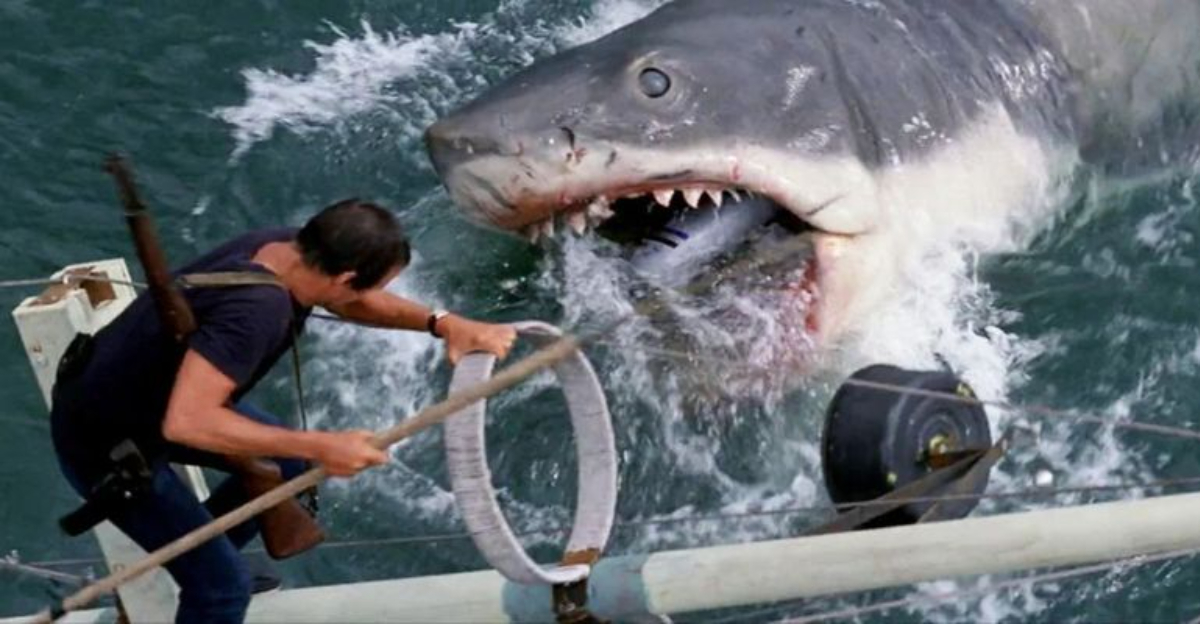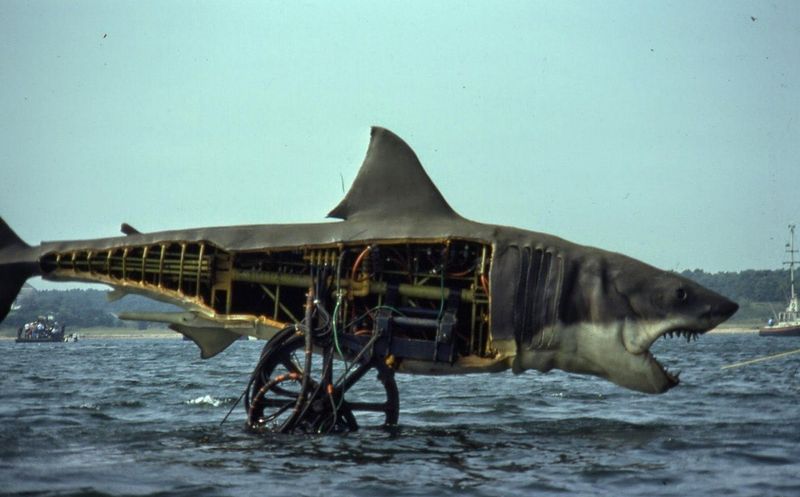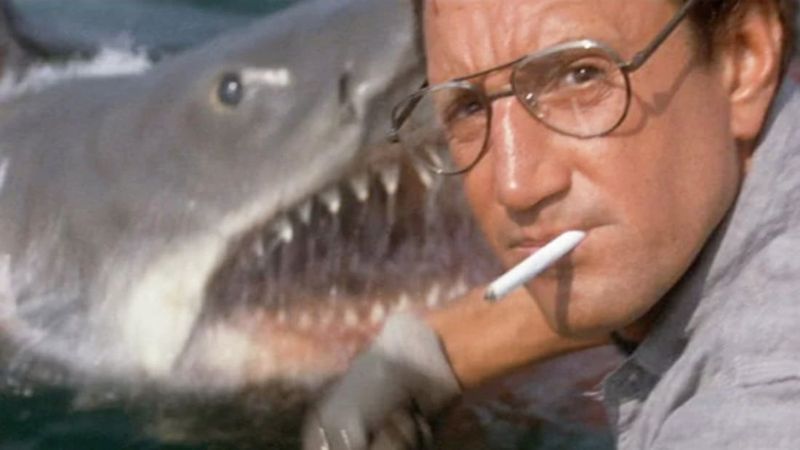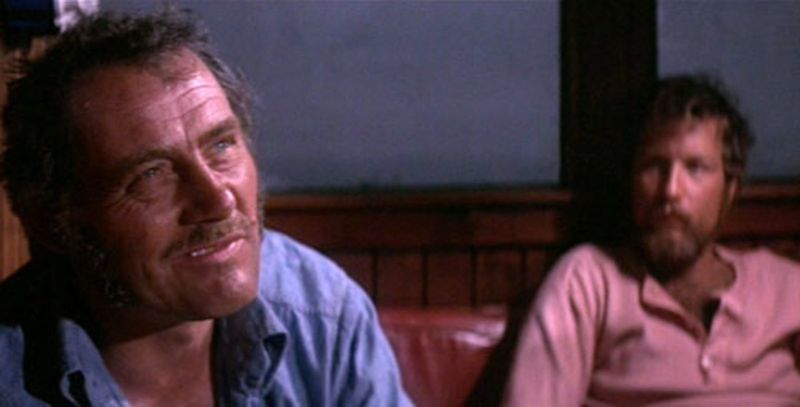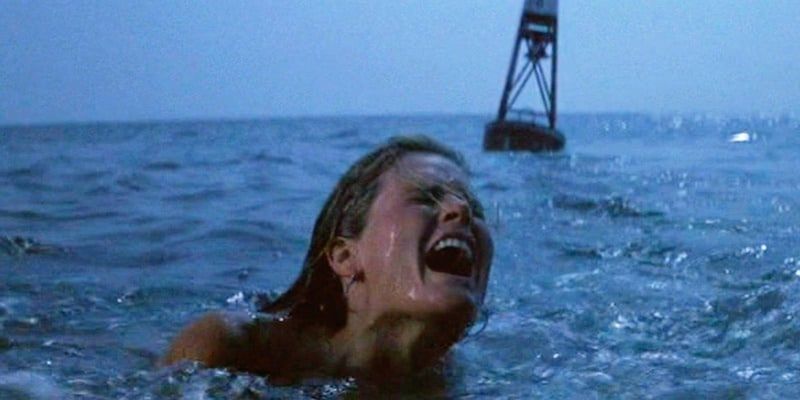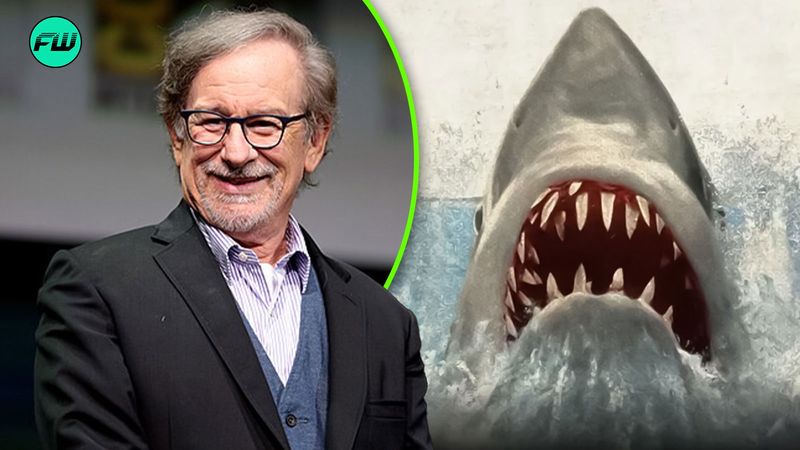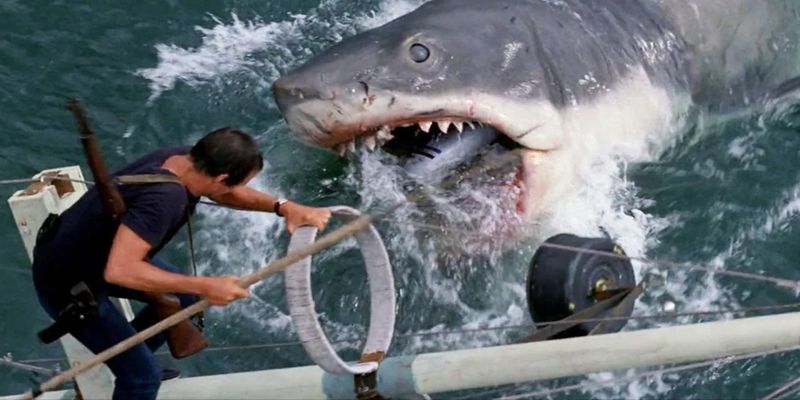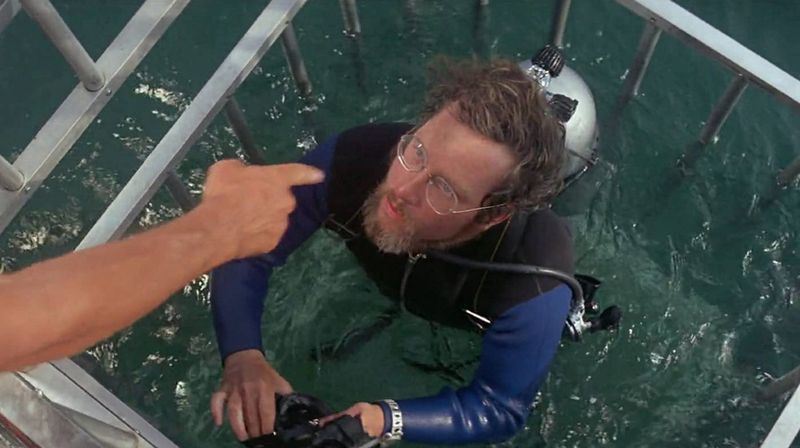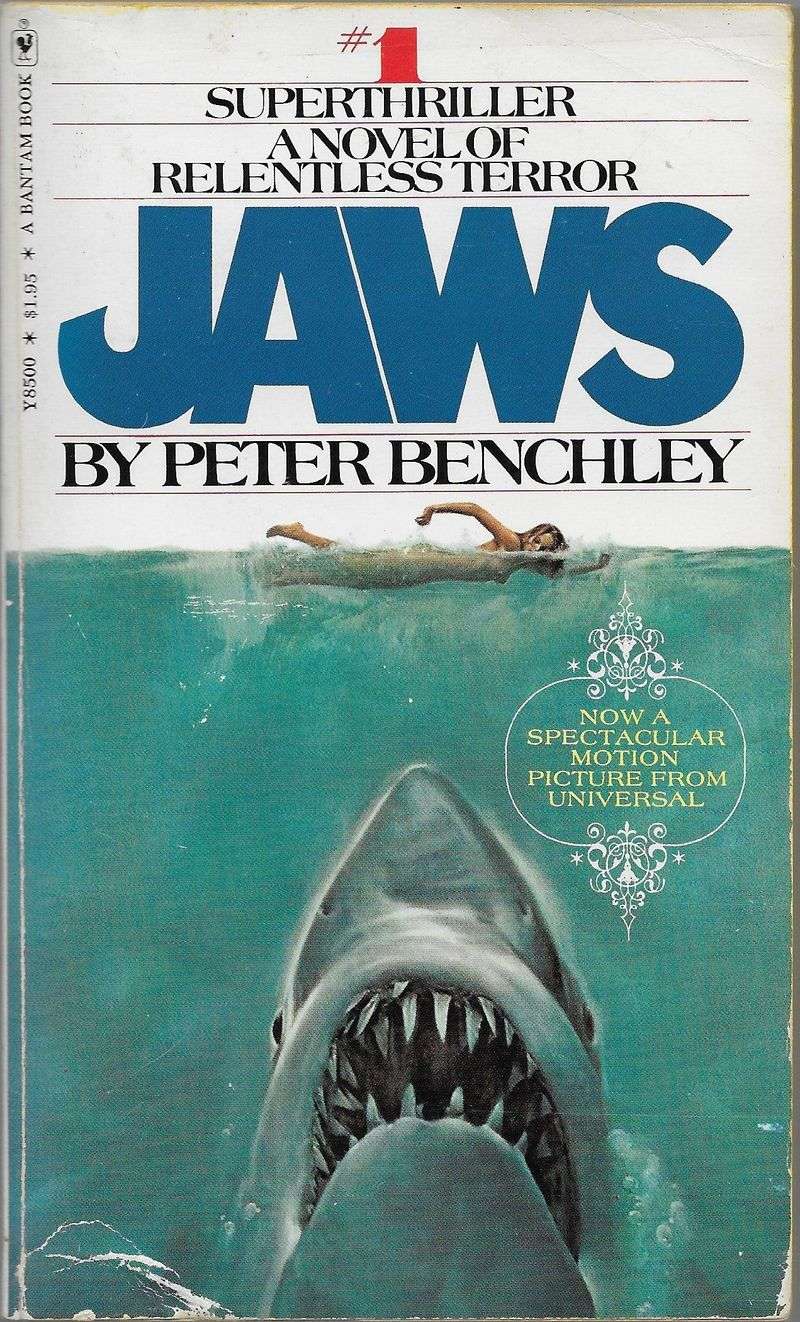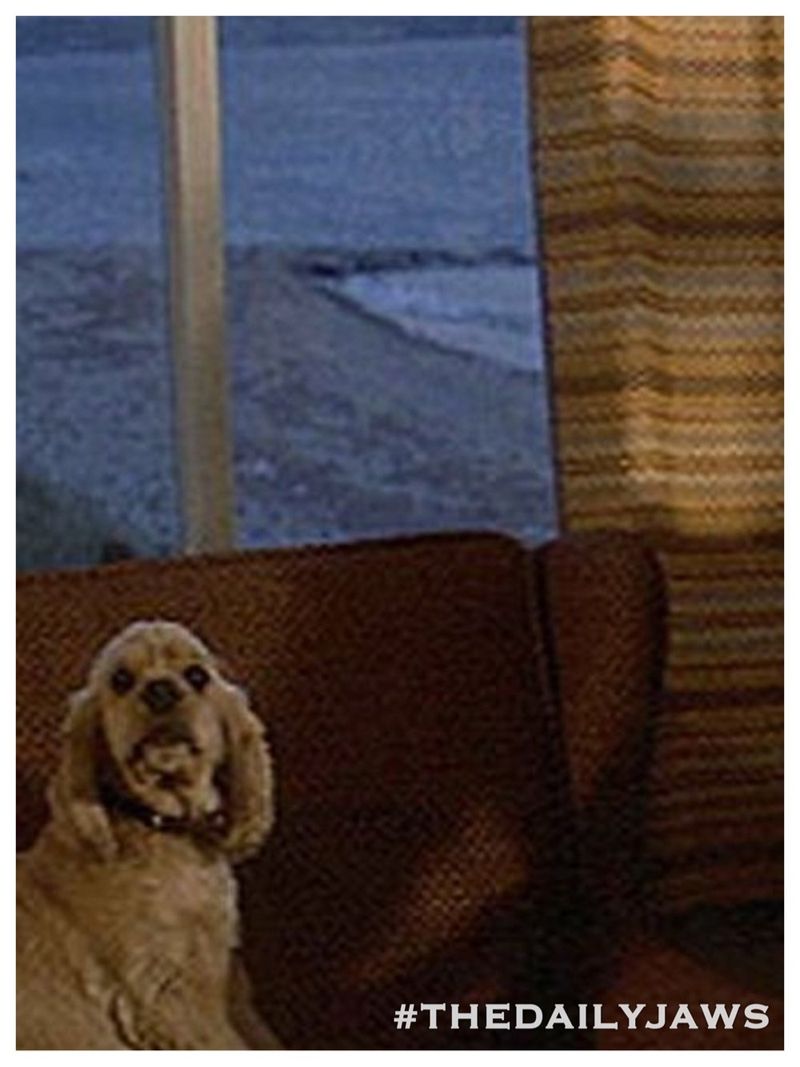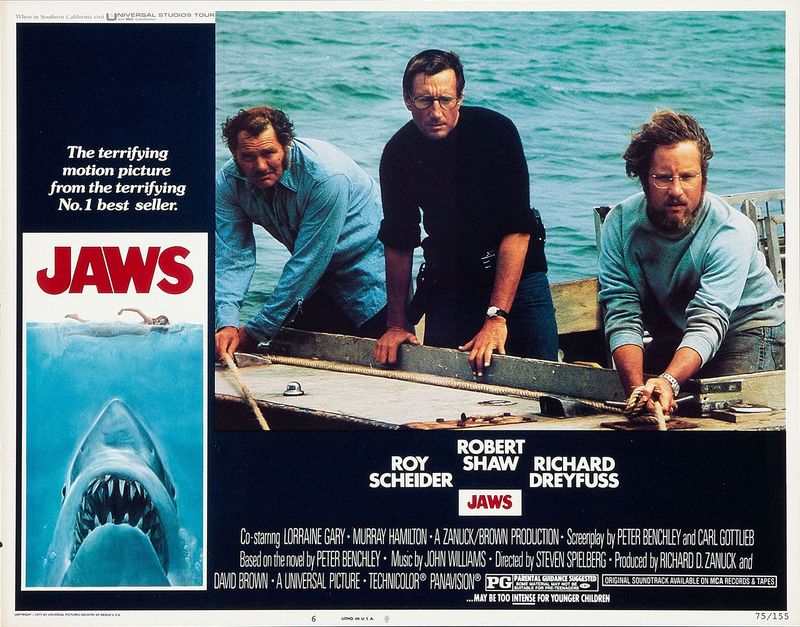Steven Spielberg’s 1975 thriller ‘Jaws’ changed cinema forever and created the summer blockbuster as we know it today.
While many fans can quote the famous lines and remember the terrifying shark attacks, this legendary film contains numerous hidden gems and fascinating production stories.
From behind-the-scenes secrets to subtle visual cues, these often-overlooked details add even more depth to this classic thriller.
1. The Shark Was Named “Bruce”
The mechanical shark that terrorized Amity Island had a surprisingly friendly name off-camera. Spielberg nicknamed the 25-foot prop “Bruce” after his lawyer Bruce Ramer, creating a humorous contrast to its menacing on-screen presence.
Bruce’s constant malfunctions nearly sank the production. The saltwater damaged its hydraulic systems, causing frustrating delays and budget concerns. Yet this technical nightmare became a blessing in disguise.
By showing the shark less frequently, Spielberg accidentally created the film’s signature suspense technique. The unseen threat became more terrifying than any visible monster could be, proving sometimes less truly is more.
2. “You’re Gonna Need a Bigger Boat” Was Unscripted
Roy Scheider’s iconic line wasn’t written in any screenplay draft. This famous quip emerged organically from the challenging production environment, where crew members frequently joked about needing bigger equipment to handle various filming challenges.
The phrase became an on-set catchphrase long before making it to screen. When equipment failed or something went wrong, someone would inevitably mutter the soon-to-be-famous words.
Scheider brilliantly incorporated this inside joke during filming, delivering it with perfect timing after seeing the shark for the first time. His natural improvisation created cinema history – proof that sometimes the best moments can’t be planned.
3. Quint’s USS Indianapolis Story Has Real Roots
Robert Shaw’s chilling monologue about shark-infested waters wasn’t just Hollywood fiction. His character describes surviving the 1945 sinking of USS Indianapolis, a genuine naval disaster where hundreds of sailors were lost to shark attacks while awaiting rescue.
Shaw, a published novelist himself, rewrote much of this powerful scene. He collaborated with uncredited screenwriter John Milius to craft what many consider the film’s emotional core.
The actor reportedly drank heavily before filming an early take, then requested another attempt completely sober. The resulting performance, delivered in near darkness with minimal camera movement, remains one of cinema’s most haunting moments.
4. The Opening Attack Required Dangerous Stunt Work
The film’s terrifying first death scene pushed safety boundaries in pre-CGI Hollywood. Actress Susan Backlinie performed the nighttime swimming sequence while attached to underwater cables controlled by crew members on shore.
When she’s suddenly yanked beneath the surface, that’s not acting – it’s genuine surprise. Spielberg deliberately didn’t tell her exactly when the pull would happen, capturing authentic shock as she was violently tugged underwater.
Backlinie later described the experience as physically grueling. The actress endured multiple takes in cold water while being repeatedly dragged underwater and side-to-side to create the illusion of a shark attack, establishing the film’s intense tone from its opening minutes.
5. Spielberg’s Voice Makes a Cameo Appearance
The legendary director didn’t just work behind the camera – his voice appears in the final cut. During the climactic battle with the shark, a radio message comes through to the Orca saying, “This is Amity Point Light Station to Orca.” That’s actually Spielberg himself!
This subtle audio cameo wasn’t planned as a director’s signature moment. The production simply needed the line recorded quickly during editing, and Spielberg stepped in rather than hiring another actor for such a brief moment.
Many viewers have watched the film dozens of times without realizing they’re hearing the director’s voice. It’s a small detail that connects audiences directly to the filmmaker in an unexpected way.
6. The Full Shark Reveal Comes Surprisingly Late
Most monster movies rush to show their creature, but Jaws keeps its star hidden for an astonishing 81 minutes. This wasn’t artistic restraint but practical necessity after the mechanical shark repeatedly failed during filming.
When Chief Brody is tossing chum off the boat and the shark suddenly appears, the shock is genuine. The famous line that follows was improvised precisely because the creature’s appearance was so startling even to the actors.
Spielberg transformed this technical limitation into suspense gold. By keeping the shark hidden, he created unbearable tension through music, water movements, and reaction shots – techniques still studied in film schools today as masterful examples of suspense building.
7. Real Shark Footage Changed Hooper’s Fate
Richard Dreyfuss’ character Hooper was originally meant to die in the shark cage. In Peter Benchley’s novel, the character meets a grisly end, and early scripts maintained this tragic outcome.
Everything changed when the production sent Australian filmmakers Ron and Valerie Taylor to capture footage of real great whites. Their incredible shots of a shark accidentally getting tangled in an empty cage were too good not to use.
The script was hastily rewritten to incorporate this unexpected footage, allowing Hooper to escape the cage and survive. This last-minute change altered the film’s ending and saved one of its most beloved characters – all because of a lucky accident during second-unit filming.
8. The Iconic Poster Came From Book Cover Art
The unforgettable image of a massive shark rising toward an unsuspecting swimmer wasn’t created for the movie. This striking visual actually originated as Roger Kastel’s paperback cover illustration for Peter Benchley’s novel.
Universal Studios recognized the power of this simple, terrifying image. They acquired rights to use the artwork with minimal changes, maintaining the swimmer and shark positioning while adjusting some details.
The model for the swimming woman later expressed surprise at her unexpected fame. She had posed for the book illustration years earlier and had no idea her silhouette would become one of cinema’s most recognizable images, still instantly identifiable nearly five decades later.
9. Spielberg’s Dogs Make An Unexpected Appearance
The furry friends seen playing with Chief Brody’s family weren’t cast from animal talent agencies. Spielberg simply brought his own pets to work! His cocker spaniels Elmer and Zalman became temporary movie stars when they appeared as the Brody family dogs.
This personal touch added authentic warmth to the domestic scenes. While the director was creating terror in the water, his own dogs were helping establish the normal family life threatened by the shark.
Many filmmakers include personal references in their work, but few literally put their pets on screen. Next time you watch, look for these enthusiastic canine performers – their brief appearance is a charming glimpse into Spielberg’s life beyond the camera.
10. The PG Rating Sparked Industry-Wide Changes
Despite showing bloody shark attacks and featuring the line “smile you son of a bitch,” Jaws somehow received just a PG rating. This seems shocking today, but in 1975, the PG-13 category didn’t exist.
Films were forced into either the too-restrictive R rating or the increasingly inadequate PG. Jaws highlighted this problematic gap, as parents were surprised by its intensity despite the family-friendly rating.
Ironically, it was another Spielberg production that finally changed the system. After controversy surrounding Indiana Jones and the Temple of Doom and Gremlins in 1984, Spielberg himself suggested creating the intermediate PG-13 rating, forever changing how films are classified.
